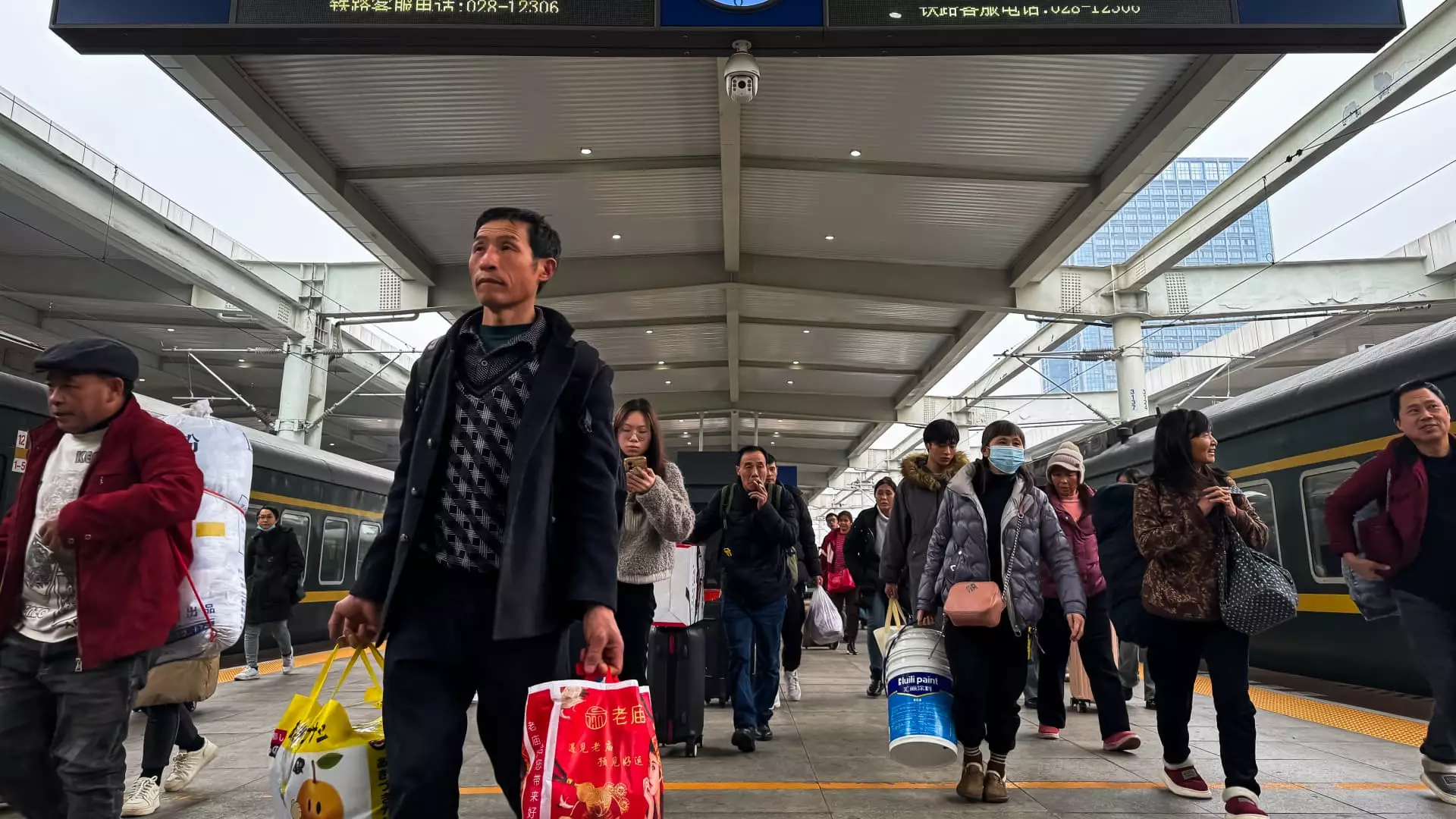The economic landscape of China is currently shaped by a myriad of factors, ranging from domestic challenges to international pressures. Despite promises of government support, tangible improvements in economic performance remain elusive. As policymakers grapple with issues such as weak consumer demand and significant structural factors, the road ahead for the Chinese economy is fraught with uncertainty.
Since the latter part of September 2023, central authorities in China have enacted several measures aimed at stimulating the economy, including interest rate cuts and ambitious stimulus plans. However, specifics regarding fiscal policies are expected to be detailed at an annual parliamentary session scheduled for March 2024. Analyses, such as those provided by the BlackRock Investment Institute, suggest that current measures may not suffice to counter the underlying issues affecting economic growth. The sentiment among investors remains cautious, as they await clearer signals that might indicate a sustainable recovery.
Furthermore, the critical concern of declining domestic demand looms large over the economy. Consumer price inflation has stagnated, registering a meager increase of only 0.5% after discounting volatile food and energy costs—the slowest growth rate in a decade. This level of inflation signals profound weaknesses in consumer confidence and spending habits, which, according to officials like Beijing’s city mayor, is a direct challenge to overall economic vitality.
Real estate remains a cornerstone of the Chinese economy, traditionally fueling growth across multiple sectors. However, after years of unchecked expansion and high debt levels, the picture has dramatically changed. The government is now faced with the complex task of rejuvenating the struggling real estate market, which has suffered immensely since the crackdown on developers’ debts began in 2020. Recent actions, such as the establishment of a “whitelist” for unfinished properties, aim to stabilize the market but have yet to provide a clear turnaround.
Analysts are divided on whether the real estate market has hit rock bottom. While some recent reports indicate a surge in sales of new homes—up nearly 40% in major cities—high inventory levels in smaller urban areas suggest that challenges remain. For instance, in cities like Foshan, the existing inventory could take many months to clear, illustrating the continuing disparity between supply and demand.
The government’s approach to stimulating consumer spending has significantly shifted from cash distributions to innovative programs such as trade-in subsidies. These initiatives are designed to prompt consumers to upgrade their electronics and appliances, thus boosting overall consumption. However, experts caution that reliance on such programs might not generate long-term growth. There’s apprehension surrounding the sustainability of the sales uptick generated from trade-ins; many believe that the enthusiasm could wane as the year progresses.
Rex Chen, CFO of ATRenew, anticipates growth in recycling transactions due to these subsidies, yet acknowledges that the overall demand for home appliances could still decrease if new home sales do not pick up. The interconnectedness of the real estate market and consumer goods emphasizes the delicate balance that policymakers must maintain to encourage both sectors.
Compounding the structural economic challenges are geopolitical tensions, particularly concerning trade with the United States. The Chinese government has started to prioritize domestic players in critical sectors, a shift that has pressured foreign enterprises operating within its borders. These dynamics raise important questions regarding the long-term viability of foreign investment in China and its implications for economic growth.
Policies aimed at connecting security needs with economic development form another layer of complexity within the current landscape. As articulated by Yang Ping of the National Development and Reform Commission, the focus on enhancing consumption underscores a strategy that includes both short-term boosts and longer-term structural adjustments. The goal is to reorient economic priorities toward sustainable consumption rather than solely depending on investments.
As China prepares for a critical parliamentary meeting in March, the future trajectory of its economy remains uncertain amidst mixed signals. While government initiatives focused on stimulating demand and supporting real estate could offer some respite, the enduring issues of weak consumer sentiment and international pressures loom large. Analysts express cautious optimism as they advocate closely monitoring developments and potential policy adjustments. While the challenges are substantial, the adaptive measures being implemented may lay the groundwork for a more resilient economic future, contingent on the success of ongoing reforms and the revival of consumer confidence.

